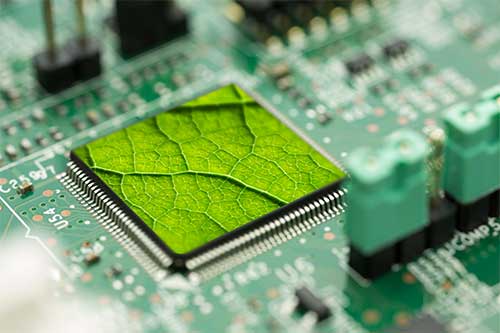Creating a more energy-efficient data center isn’t only good for the environment, but also a great way for your customers to lower their total cost of ownership (TCO).
In many organizations, the IT department is the single biggest consumer of power. Data centers are filled with power-hungry components, including servers, storage devices, air conditioning and cooling systems.
The average data center uses anywhere from 2 to 4 Terawatt hours (TWh) of electricity per year. That works out to nearly 3% of total global energy use, according to Supermicro. Looking ahead, that’s forecast to reach as high as 8% by 2030.
One important measure of data-center efficiency is Power Usage Effectiveness (PUE). It’s calculated by taking the total electricity in a data center and dividing it by the electricity used by center’s IT components. The difference is how much electricity is being used for cooling, lighting and other non-IT components.
The lower a data center’s PUE, the better. The most energy-efficient data centers have a PUE of 1.0 or lower. The average PUE worldwide last year was 1.55, says the Uptime Institute, a benchmarking organization. That marked a slight improvement over 2021, when the average PUE was 1.57.
Costly power
All that power is expensive, too. Among the short list of ways your customers can lower that cost, moving to energy-efficient server CPUs is especially effective.
For example, AMD says that 11 servers based on of its 4th gen AMD EPYC processors can use up to 29% less power a year than the 17 servers based on competitive CPUs required to handle the same workload volume. And that can help reduce an organization’s capital expenditures by up to 46%, according to AMD.
As that example shows, CPUs with more cores can also reduce power needs by handling the same workloads with fewer physical servers.
Yes, a high-core CPU typically consumes more power than one with fewer cores, especially when run at the same frequency. But by handling more workload volume, a high-core CPU lets your customer do the same or more work with fewer racks. That can also reduce the real estate footprint and lower the need for cooling.
Greener tactics
Other tactics can contribute to a greener data center, too.
One approach involves what Supermicro calls a “disaggregated” server architecture. Essentially, this means that a server’s subsystems—including its CPU, memory and storage—can be upgraded without having to replace the entire chassis. For a double benefit, this lowers TCO while reducing E-waste.
Another approach involves designing servers that can share certain resources, such as power supplies and fans. This can lower power needs by up to 10%, Supermicro says.
Yet another approach is designing servers for maximum airflow, another Supermicro feature. This allows the CPU to operate at higher temperatures, reducing the need for air cooling.
It can also lower the load on a server’s fans. That’s a big deal, because a server’s fans can consume up to 15% of its total power.
Supermicro is also designing systems for liquid cooling. This allows a server’s fan to run at a lower speed, reducing its power needs. Liquid cooling can also lower the need for air conditioning, which in turn lowers PUE.
Liquid cooling functions similarly to a car’s radiator system. It’s basically a circular system involving an external “chiller” that cools the liquid and a series of pipes. The liquid is pumped to run through one or more pipes over a server’s CPU and GPU. The heat from those components warms the liquid. Then the now-hot liquid is sent back to the chiller for cooling and then recirculation.
Green vendors
Leading suppliers can help you help your customers go green.
AMD, for one, has pledged itself to delivering a 30x increase in energy efficiency for its processors and accelerators by 2025. That should translate into a 97% reduction in energy use per computation.
Similarly, Supermicro is working hard to help customers create green data centers. The company participates in industry consortia focused on new cooling alternatives and is a leader in the Liquid Cooling Standing Working Group of The Green Grid, a membership organization that fosters energy-efficient data centers.
Supermicro also offers products using its disaggregated rack-scale design approach to offer higher efficiency and lower costs.
Do more:
- Explore AMD’s EPYC energy efficiency



